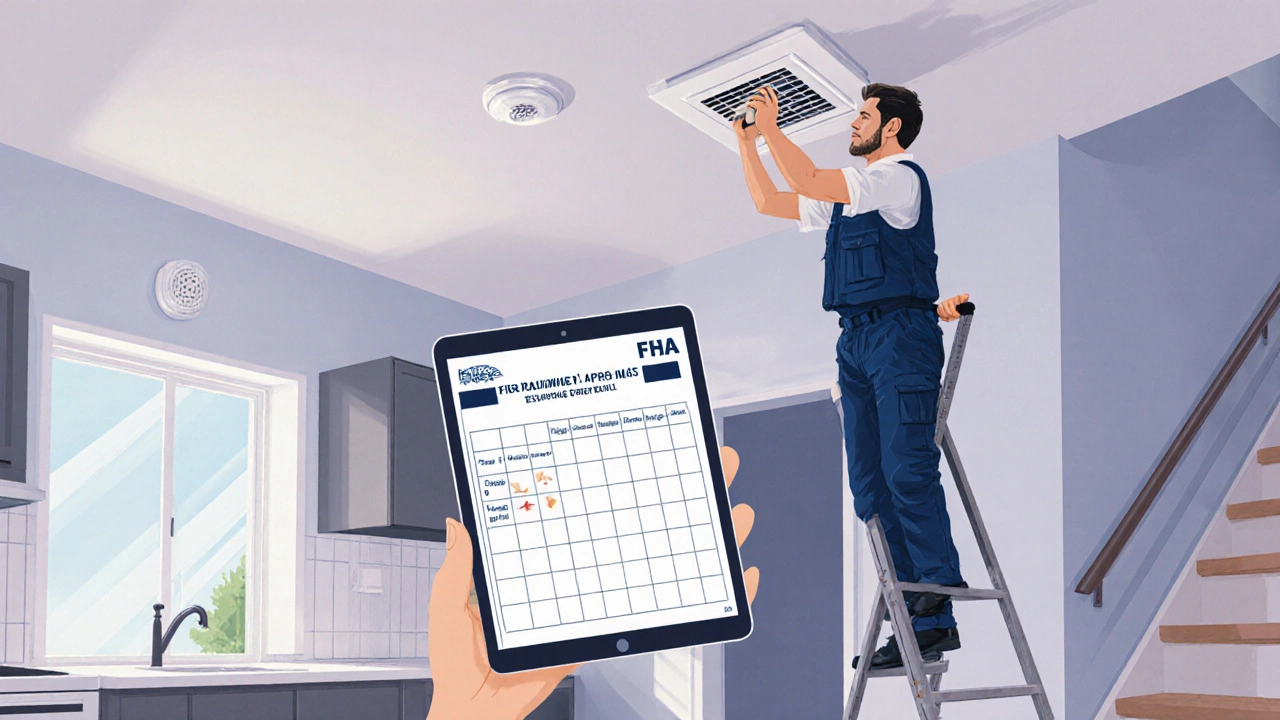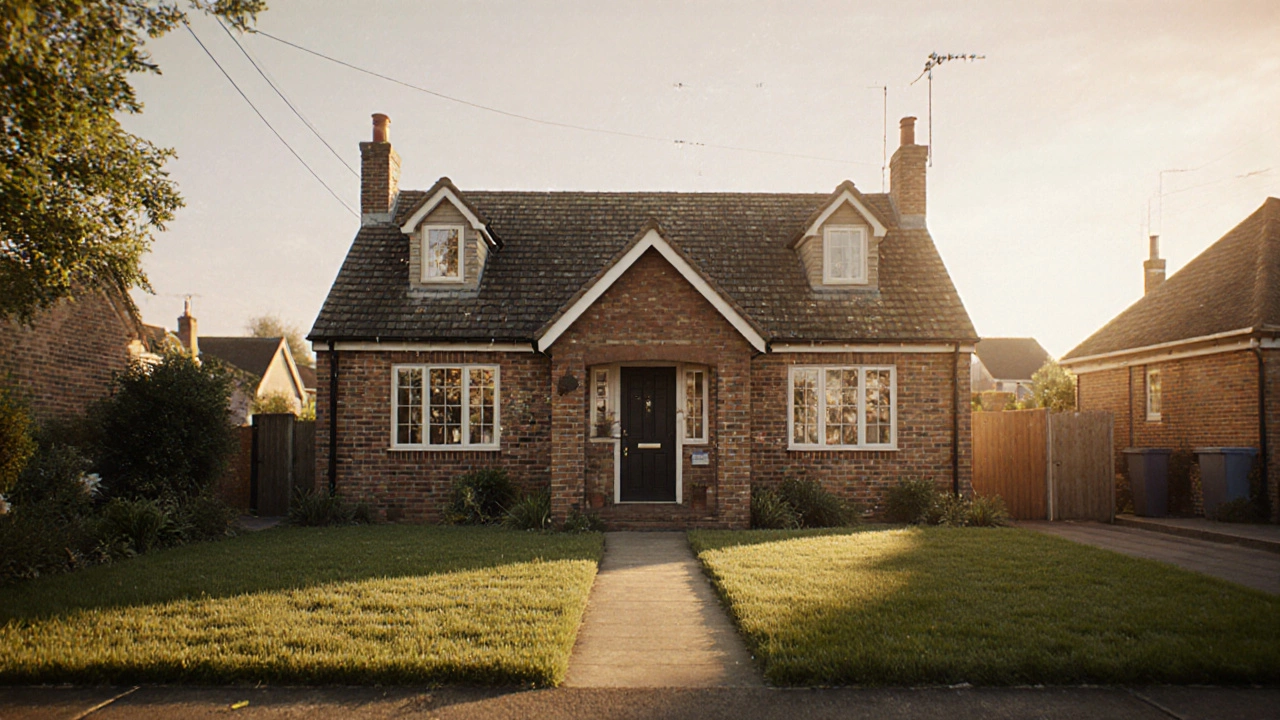FHA Home Eligibility Checker
This tool helps determine if a home would likely meet FHA approval requirements. Enter details about the property below:
When you hear about an FHA approved house, you’re really hearing about a property that meets a specific checklist set by the federal government. Those rules exist to protect borrowers, lenders, and the overall housing market. If you’re looking to buy with an FHA loan, knowing the exact criteria can save you weeks of paperwork and a lot of frustration.
Key Takeaways
- FHA approval focuses on safety, structural integrity, and livability.
- Both the property and its location must pass HUD‑set environmental and flood‑zone checks.
- The appraisal must come from an FHA‑approved appraiser who follows strict scoring guidelines.
- Mortgage insurance premiums are calculated on the loan amount, not the property’s condition.
- Common deal‑breakers include severe roof damage, foundation issues, and non‑compliant heating systems.
How FHA Approval Works
First, the borrower applies for an FHA loan. The loan program is administered by the Federal Housing Administration, a division of the U.S. Department of Housing and Urban Development (HUD). HUD issues a set of property standards that every home must satisfy before a lender can issue the mortgage.
Once you’ve found a property, the lender orders an FHA‑approved appraisal. The appraiser walks through the house, checks each required element, and assigns a score. If the home meets the minimum score, the lender can move forward with the loan; if not, the seller must either fix the issues or the buyer walks away.

Core Property Criteria
The FHA checklist breaks down into three major buckets: Condition, Safety, and Structural Integrity. Below is a quick view of what each bucket looks like.
| Category | Must‑Have | Deal‑Breaker if Missing |
|---|---|---|
| Condition | Functional kitchen, bathroom, and heating/cooling | Broken windows, missing doors, non‑working stove |
| Safety | Working smoke detectors, carbon‑monoxide alarms, handrails on stairs | Exposed wiring, faulty electrical panels, no egress windows |
| Structural | Solid foundation, sound roof, stable walls | Major foundation cracks, roof leaks, sagging floors |
Roof condition is a big one-any visible leaks or missing shingles must be repaired before the appraisal can pass. The foundation also gets a close look; large cracks or uneven settling typically mean the house won’t be approved until a structural engineer signs off on a repair plan.
Location and Environmental Rules
Beyond the four walls, where a house sits matters a lot. HUD requires a check for flood zones, earthquake risk, and even radon levels in certain states. If the property falls inside a high‑risk flood zone, it must have an approved flood‑plain elevation certificate and often a flood‑insurance policy before the loan can close.
Some neighborhoods also have local ordinances that affect FHA eligibility-for example, restrictions on multi‑family conversions or historic‑district preservation rules. Checking the local zoning office early can prevent a surprise later.
Appraisal, Mortgage Insurance, and the Bottom Line
The FHA appraisal is not a market‑value estimate like a conventional appraisal. Instead, it focuses on whether the home meets the minimum livability standards. The appraiser fills out a Uniform Residential Appraisal Report (URAR) and adds an FHA‑specific section that scores the property on a 100‑point scale.
If the score is 70 or higher, the home passes. Scores below 70 trigger a list of required repairs. The borrower can request a price reduction or the seller can agree to fix the items before closing.
Every FHA loan carries a mortgage insurance premium (MIP). The upfront MIP is typically 1.75% of the loan amount, and the annual MIP ranges from 0.45% to 1.05% depending on the loan‑to‑value ratio. The MIP does not depend on the property’s condition; it’s a cost of the loan program itself.

Common Pitfalls & Pro Tips
- Ignoring the roof. Even a small leak can halt the entire process. Get a roof inspection before you make an offer.
- Skipping the flood‑zone check. Many buyers discover later that a required flood‑insurance policy adds thousands to the monthly payment.
- Assuming the seller will cover repairs. In FHA deals, repairs are often negotiated as a credit rather than a direct fix. Make sure the credit is documented in the purchase contract.
- Overlooking local codes. Some cities require additional safety upgrades-like child‑proof outlets-that aren’t in the federal list but will still cause a fail.
- Rushing the appraisal. If the initial appraisal comes back with a low score, you have time to arrange repairs and request a re‑appraisal before the loan deadline.
Next‑Step Checklist for Buyers
- Confirm the property is in an FHA‑eligible area (check HUD’s online map).
- Order a pre‑purchase home inspection focused on roof, foundation, and safety items.
- Ask the seller for any existing flood‑plain elevation certificates.
- Work with a lender who has experience with FHA loans; they’ll schedule the required appraisal.
- Review the appraisal report carefully; note any items scored below 70.
- Negotiate repairs or price adjustments based on the appraisal findings.
- Secure the required mortgage insurance premium and factor it into your budget.
- Close the transaction and move into your new FHA‑approved home.
Frequently Asked Questions
Can a newly built home be FHA approved?
Yes. New construction must still meet all safety, structural, and environmental standards. Builders often work with FHA‑approved lenders to ensure the plans comply before the first appraisal.
What if the seller refuses to fix a failed item?
You can ask for a seller credit, lower the purchase price, or walk away. The appraisal must come back at 70 points or higher; otherwise the loan cannot close.
Do FHA‑approved condos have extra rules?
Condo units must be in an FHA‑approved building, meaning the homeowners’ association’s bylaws, insurance, and financial health meet HUD’s criteria. Individual units still need to pass the standard property checks.
How long does the appraisal process take?
Typically 7‑10 business days after the appraiser receives the request. Delays can happen if additional inspections-like roof or foundation-are required.
Is there a limit on how much I can borrow with an FHA loan?
Yes. The FHA sets county‑specific loan limits that change yearly. For most of the U.S. in 2025, the limit ranges from $356,362 in low‑cost areas up to $822,375 in high‑cost counties.
